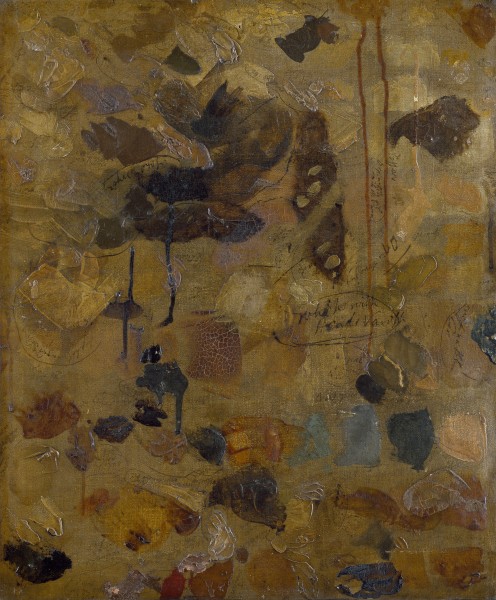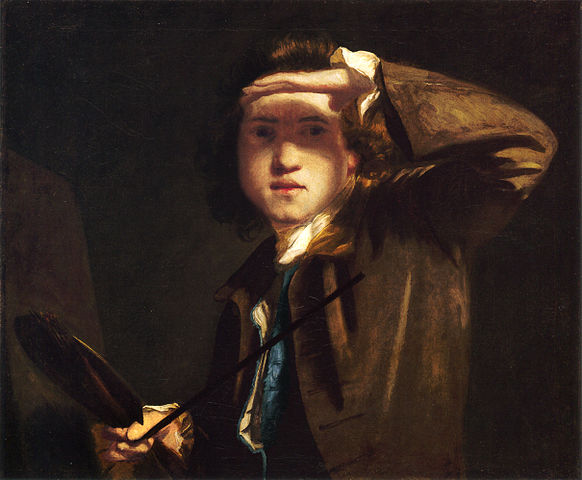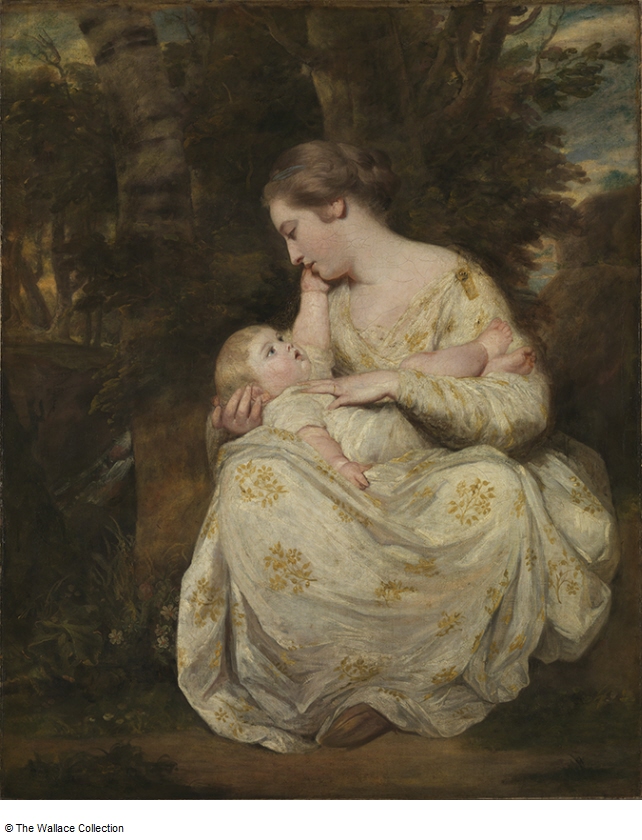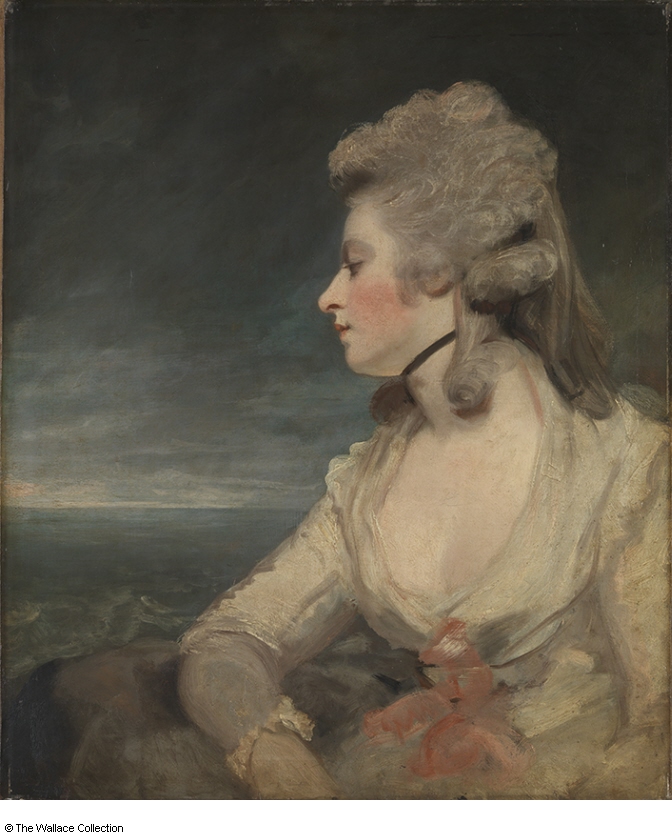Joshua Reynolds: Experiments in Paint
Wallace Collection, 12th March – 7th June
Before I start I have to apologise that I only got around to seeing this exhibition the day before it closed, and so recommending it is rather useless. But it was wonderful so I do want to write a little about it. Joshua Reynolds (1723-92) is one of those artists whose influence on painting is essential to understanding the development of British art history. Although you wouldn’t necessarily know just by looking at his works he was a revolutionary. While his paintings generally fit a visual archetype he was versatile, always thinking about new ways of methods whilst steadfastly upholding tradition and a respect for the Old Masters he so admired.
Reynolds was an academic artist who spent the majority of his career devising theories and methods to improve not just his own work but the face of contemporary art. He fused a deep rooted understanding for artists of the past – especially Rubens, his pupil Van Dyck and Rembrandt – with a scientific experimental spirit. In the very first room of the small but impactful exhibition was a framed canvas of splodges and strokes of paint, Studio Experiments in Colour and Media (c. 1770 – 1780). It was probably used by the artists to investigate the effects of time and varnishes on paint, layering pigments with waxes and resins. Reynolds tested materials to achieve the desired tonal and atmospheric results for his paintings. But his innovations were not always successful as some of the varnishes he used lead to the fading colours and cracking of surfaces, effecting many of his finished canvases.

Studio Experiments in Colour and Media (c. 1770-80s) by Joshua Reynolds, mixed media on canvas, Royal Academy of Arts, London
Self Portrait (1747-9) depicts the artist as how I imagine he saw himself. In his early twenties he looks out beyond us, his gaze full of wonder and curiosity. With an air of courage he appears as a sort of creative visionary, facing the frontier. In his youth he went to Florence, Venice and Rome, and continually studied the Old Masters. He quoted Michelangelo and Raphael as his enduring favourites. But here we can see the influence of Rubens, Van Dyck, and Rembrandt whose portrait Reynolds based his own on. But have you seen any other self portrait quire like this? The pose is very unusual, it is very informal and sketchy but it shows the young man’s originality and painterliness. The colour palette and tonality are very Rembrandt. But this is what Reynolds was about; not copying the past but learning from it and being inspired by it to do something new and unique. Reynolds founded and became President of the Royal Academy of Arts in 1768, an institution created to teach artists and revive the status of art in Britain through debate and annual exhibitions. In his Discourses, his lectures given to the Royal Academy students published between 1769-90, he said ‘I can recommend nothing better… than that you endeavour to infuse into your works what you learn from the contemplation of the works of others.’ And that is the key; learn from others.
Mrs Hoare & Child (1763-4) is like a Renaissance Madonna and Child, brought into the modern world. Set in a very British looking woodland (this is seen throughout his portraits) Mrs Hoare sits in a natural and relaxed position, bending over and gazing into the eyes of her baby. She is a picture of beauty, glowing with motherhood. Again there is a nod to the Old Masters, but Reynolds brings something new. He once said ‘nothing can be more simple than monotony’, and although this has an element of tradition it is not an ordinary portrait. Mrs Hoare is dressed in a Grecian-style embroidered white and gold gown, fashionable at the time (she married into the wealth of the Hoare banking family). Symbolic of innocence and heaven, the warm white and gold is mirrored in the child’s clothes, hair and skin. Colours were very important to the artist, and he always linked things through tone. It is a scene of pure love and devotion. Their eyes meet tenderly, and it is such an intimate scene that it feels as though we shouldn’t be sharing in it. Reynolds often painted portraits of children and families, which some critics of the time saw as fluffy and sentimental.
Portrait of actress and society beauty Mrs Mary Robinson (1783-4) is an intimate painting, both spatially and psychologically. It is dramatic, like the sitter who was famous for her outrageous behaviour and her position as mistress to the young Prince of Wales, the future George IV. The roots of the portrait are definitely traditional, but Reynolds brings his own style to it. Echoing masters of portraiture such as Titian the format is simple and the sitter is at the core of the picture. We see Mrs Robinson not as a glamorous and frivolous socialite, but instead turning away from us in sadness. She became a close friend of the artist and I think that this is reflected in its intimacy. The pose is relaxed as she leans on a rock, tired and resigned. Her dress, make-up and hair are of the highest fashion, but rather than elevating her they only contrast with the forlorn expression on her face, creating mystery and intrigue. A stormy sky perhaps hints at something going on beneath her facade. The powdered face has been painted with the most detail, the rest is left sketchy. Shown in profile (and what a profile it is) her eyes are lowered and her mouth is pursed in reflection. An x-ray of the canvas shows that originally Reynolds had depicted her more upright with a hand under her chin. Her gaze was modified so that she looks out to the horizon in a peneroso manner. This romantic melancholy was made famous by Reynolds, and was much copied at the time, and became synonymous with English sensibility. As with all women sitters Reynolds captures the essence of femininity; sophistication and elegance but with an element of knowing. They say that portraiture is all in the eyes, but without seeing Mrs Robinson’s we can know something about her.
When I think of Reynolds I picture grand portraits of the wealthy and aristocratic celebrities of the time, posed like figures from history or myth against swathes of fabric and ruins or classical architecture, perfectly grand images of Georgian society. But looking at some of the lesser known paintings here it is clear that there is more substance to him than all that. And of course learning all about his technical ability and innovative methodology gives him a status beyond a painter of likenesses. He learnt from the Renaissance masters, lessons from antiquity which give his works that classicism. From his formative years he was not happy to simply just paint, he wanted to develop and improve techniques, not only for himself but for all artists. From painters like Jan Van Eyck and later with Rembrandt experimentation with oil paint continued through the centuries. For Reynolds, the method and the materials were necessary to achieve his visions, but they were always secondary. He said that ‘Art in its perfection is not ostentatious; it lies hid and works its effect, itself unseen.’



